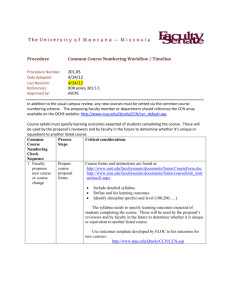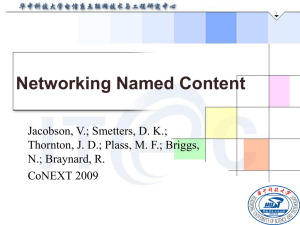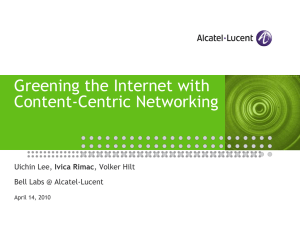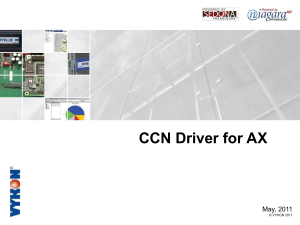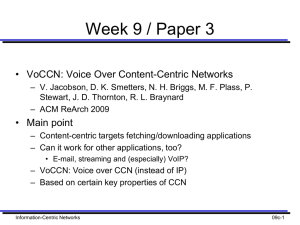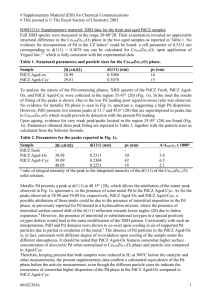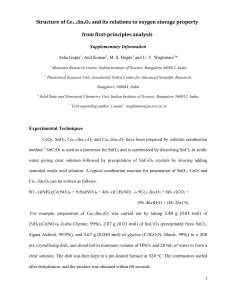Slides
advertisement
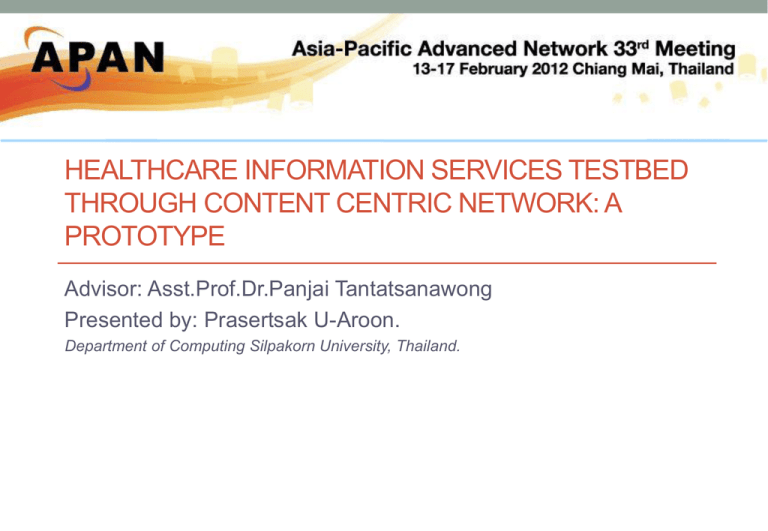
HEALTHCARE INFORMATION SERVICES TESTBED THROUGH CONTENT CENTRIC NETWORK: A PROTOTYPE Advisor: Asst.Prof.Dr.Panjai Tantatsanawong Presented by: Prasertsak U-Aroon. Department of Computing Silpakorn University, Thailand. 2 Outline • Introduction • Content-Centric Networking concept • A Prototype of CCN • Experiments • Conclusions 3 Introduction • Healthcare and hospital are the most complex service systems. • The trend of healthcare data usage is more collaboration. Data evolution in the Healthcare System Paper format Electronic Data (Own Formatted) Standardization Formatted (e.g., HL7, DICOM) Data Collaboration 4 Introduction : Healthcare Communities • Medical staff working together to treat the patients • Healthcare services should not be limited by network infrastructure • Patients should receive the best services in anywhere 5 Introduction : Network Infrastructure • A huge of data are exchanged on distributed system over the medical cloud • Give more bandwidth for the data transmission • dedicated networking • Scheduling control DCN (Dynamic Circuit Network) 6 Introduction : CCN networking • DCN – Dynamic Circuit Network • Need specific devices to support the dedicated mechanism • Need professional to support and complexity for maintenance • DCN – Difficult to support mobility services • CCN – New approach for networking CCN (Content-Centric Network) - simplified to use, reliability, and flexibility to use anytime and anywhere 7 Content-Centric Network concept • Content-centric networking (CCN) is an alternative approach to the data approach on the network rather than the location approach, based on concept of what rather than where. 8 Content-Centric Network concept Interest Message-1 User-A f2 f1 Interest Message-1 f1 R2 response f3 R1 f2 Interest Message-2 User-B Interest Message-1 response XRay data stored in hospital-1 Interest Message-2 f1 R3 f2 response PIT Data Face R2 R3 R1 /medical/hospt1/div1/patient-1/xray-12012011.dicom /medical/hospt1/div1/patient-1/xray-12012011.dicom /medical/hospt1/div1/patient-1/xray-12012011.dicom 1 1 1,2 /medical --/hospt1 -----/div1 --------/patient-1 -----------/xray-12012011.dicom 9 Information Hierarchy 10 Name Convention & Discovery • Unique for reference and easy to manage. [protocol]:/[group-name][hospital]/[division]/[domain]/[personal-id]/[data] ccnx:/medical/hospital-1/division-1/xray/patient-id/dataxxx Should well known for the requestor [protocol]:/[groupname]/[hospital]/[discovery]/[patient-id]/[data] ccnx:/medical/hospital-1/discovery/patient-id/dataxxx 11 Prototyping of medical network over CCN • Hub and spoke model 12 Accessories of network prototype • Hub and spoke model • 1 core node • 2 sub-networks • 3 end-nodes • H/W • PC – Dual-Core CPU 2.8 GHz with 2GB RAM • Cisco 2960 switch • S/W • Vmware ESXi 5.0 • Linux Ubuntu server 10.04 • CCNx® open source project (CCNx-0.4.2) http://www.ccnx.org/ 13 Testing topics & Testing Diagram • Testing topics over the prototype • Connection (by ccnchat) • Data transmission (by ccnputfile/ccngetfile) • Number of CCN node on the network affect the transmission time • Simple performance comparison between FTP and CCNx protocol Use “medical” as a prefix name of the content 14 Experimental Result : Connection & Data transmission Connection Testing Result No. Testing Description Expected Testing Result 1 Comunication among nodes in sub network (1ßàBßà2) · With ‘medical” prefix · Without “medical” prefix Yes No Yes No 2 Comunication among nodes through public network ( 1ßàBßàCßàAßà3, 1,2ßàBßàCßàAßà3 ) Yes · With ‘medical” prefix No · Without “medical” prefix Yes No 15 Experimental Result : Number of node • The number of CCN router on the network does not significantly affect the transmission 16 Experimental Result : Concurrent data usage • Comparison of FTP on IP networking and data transmission over CCN network Content size 17 Conclusions • A distributed location and multiple site accessibility of data in • • • • healthcare services are supported through the CCN infrastructure. CCN suitable to implement and less time consuming to develop the system. The system administrator is easier to manage and classify the data. The patients have the opportunity to receive better services in anytime and anywhere. The healthcare communities have a more collaboration. 18 Future work • Integrate the real world application of Healthcare Information Services into the Content-Centric Network. • More investigate in security of patient’s data. 19 Thank You. ? … .zZ Discussions | Q/A ?

